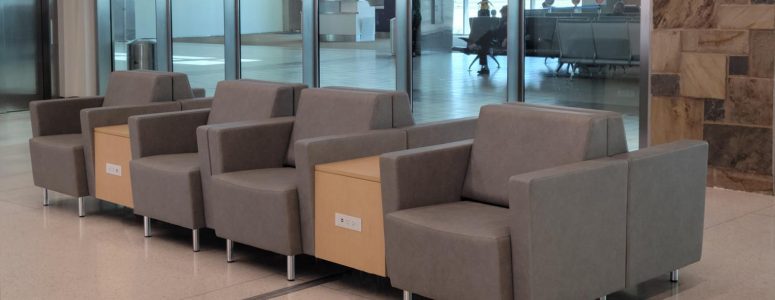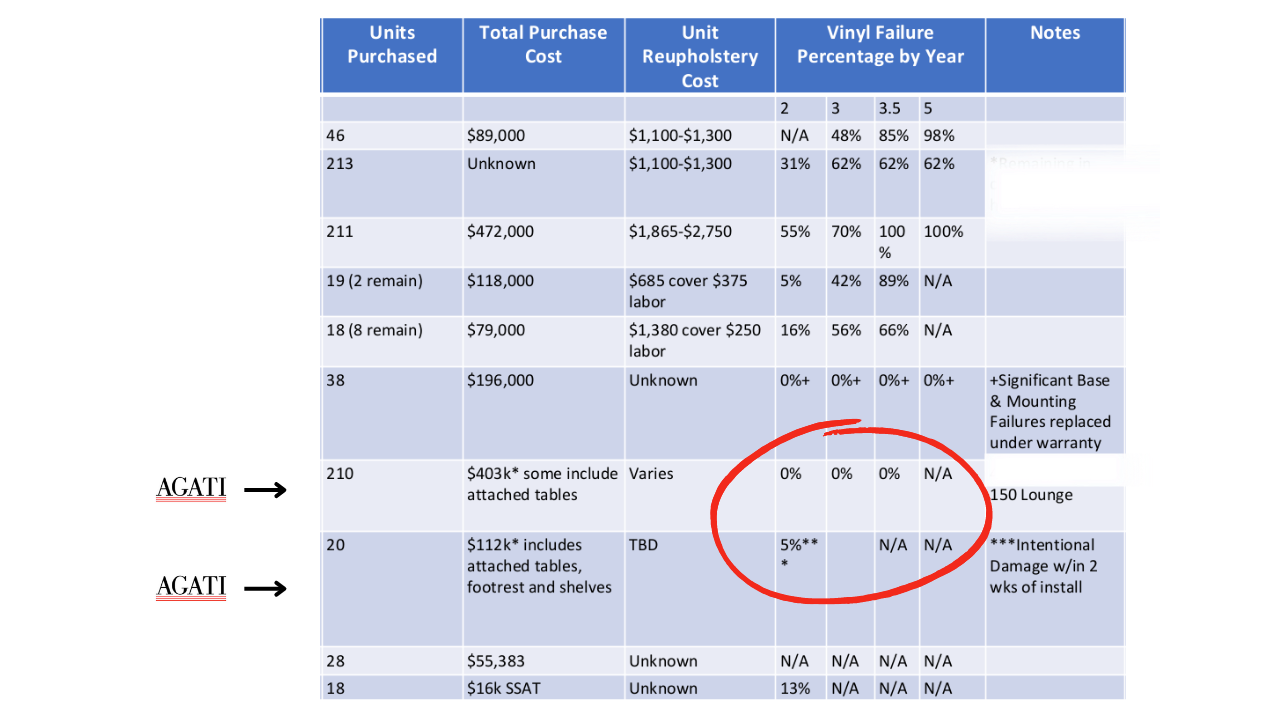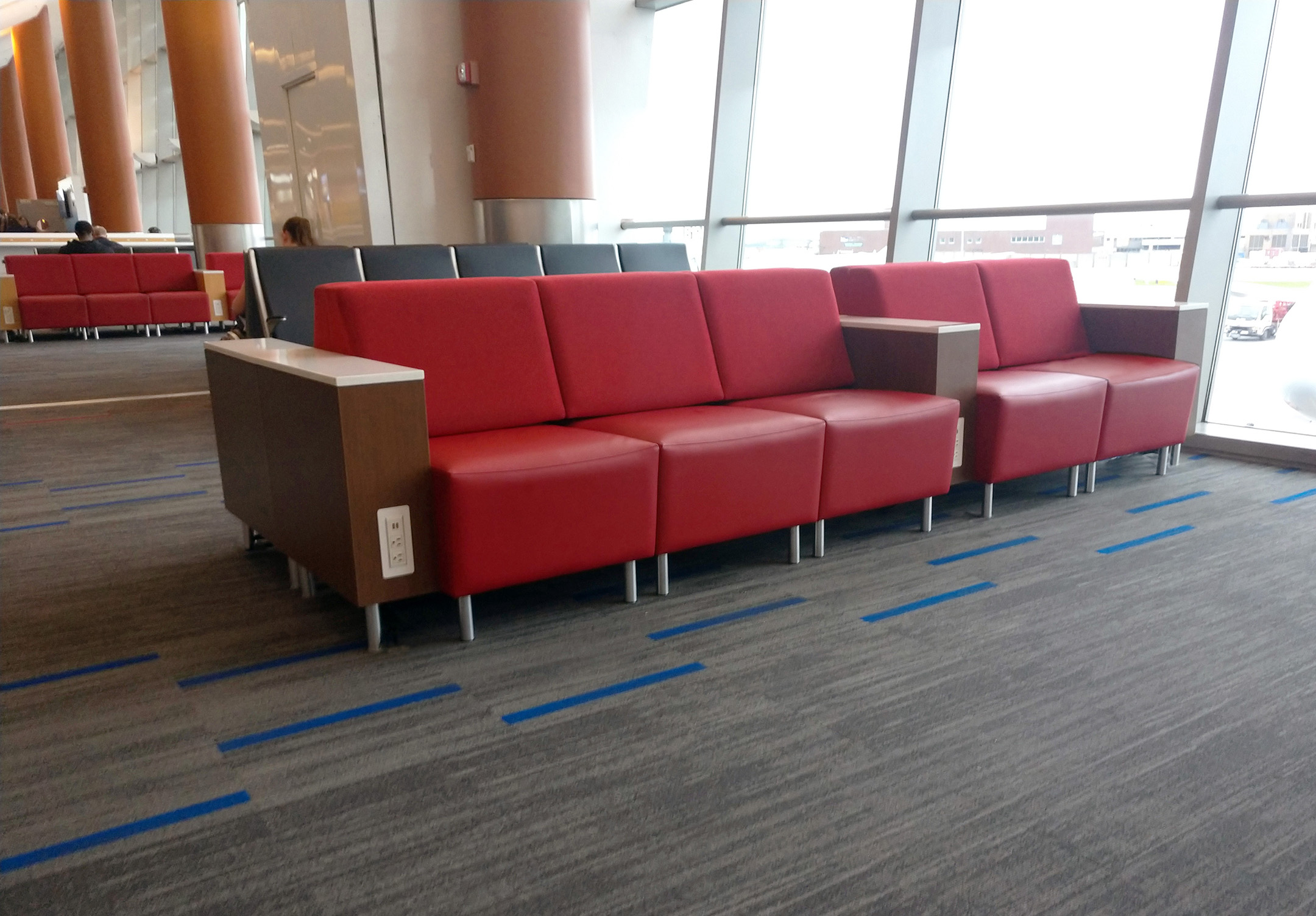
We recently were talking with a top airport in the U.S. that we’ve had the opportunity to partner with on multiple projects over the years. They shared a document with us that was a perfect example of the importance of considering Total Cost of Ownership (TCO) when it comes to furnishing a public space.
While we can’t disclose the airport or exact products being compared, we received permission to share the numbers themselves.
Take a look at the chart below, which shows a comparison between soft seating products available in a newer section of the airport. Most importantly, take a look at the “Vinyl Failure Percentage by Year” section, and how the two rows marked with the Agati logo compare to the rest.
Airport Soft Seating Investment Comparison

Durability Considerations for Public Spaces
Furnishing a public space like an airport, library, university, government building, etc. is unique. With a space that needs to support hundreds or thousands of people every day, office furniture simply won’t cut it. The furniture featured needs to be able to support the large amount of traffic without issue.
Read More: Why You Can’t Afford to Buy Low Quality Furniture
Beyond the large amount of people who will utilize the furniture, some people are less concerned with how they treat furniture in public spaces in comparison to how they may treat their own furniture. In the same report that the chart above comes from, the airport highlights durability challenges like graffiti, intentional damage, intentional furniture relocation by travelers, luggage snags, etc.
While some of those realities are inevitable, furniture for public spaces must be sufficiently designed to survive the significant wear and tear it’s bound to endure in a constantly-used public space.
Upfront Cost vs. Total Cost of Ownership
The reality is that budgets for furniture are often tight for projects in a variety of public spaces. As a result, what can happen is that teams lean towards the solution with the lowest upfront cost.
However, if that low-cost furniture is not able to withstand the environment effectively, those same teams end up having to invest more and more money into those solutions to reupholster, repair, or replace the furniture.
This is what the chart above represents for the airport being discussed. You can clearly see the correlation between other solutions, which in some cases had a lower upfront cost, and the higher failure rate that airport has seen in 1-4 years after installation.
How Well Does Your Furniture Hold Up to Heavy Use?
Today, we invite you to consider: How well does your current furniture hold up to the needs and patterns of use of your patrons? If you’re planning for a redesign in the future, how do you need to consider Total Cost of Ownership in the overall estimations you’re planning for?
Looking for more? Get in touch with one of our furniture experts to talk about your space!

